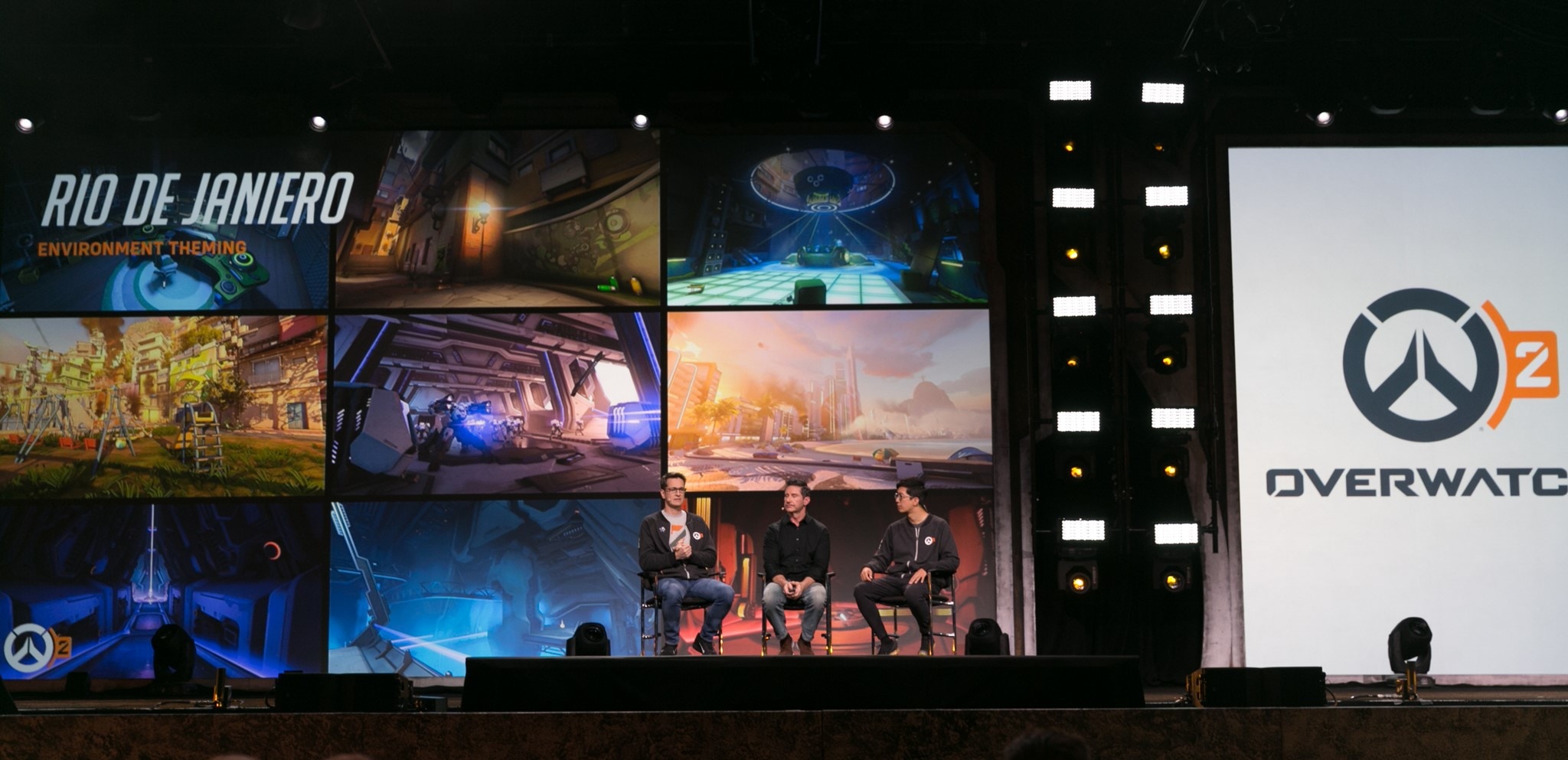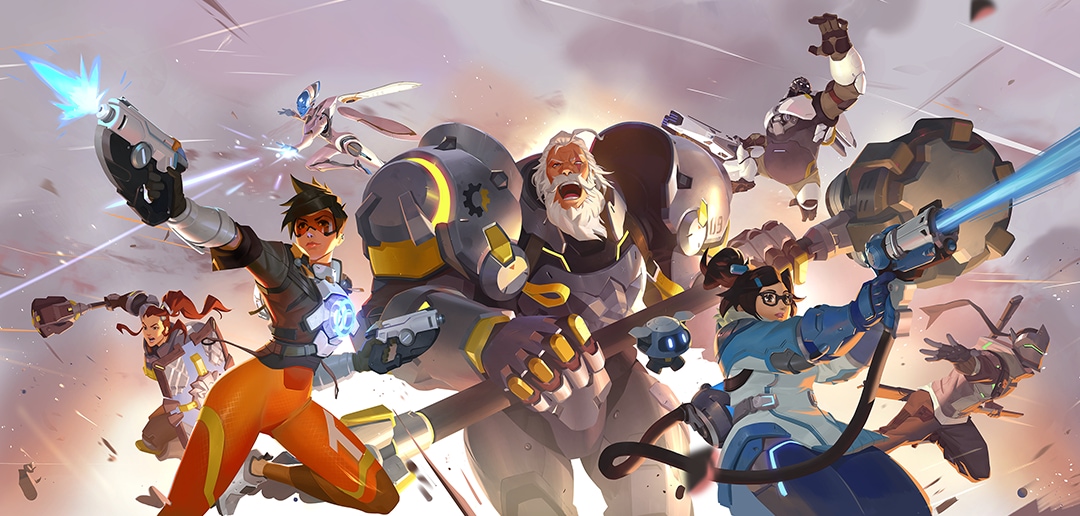Revving Up the Engine—Overwatch 2 “Evolving the Art” Panel Recap
At BlizzCon 2019, we presented a first look at the sequel to Overwatch. With improved visuals, technology, and immersive storytelling, Overwatch 2 is set to build upon the foundation created by the original game and bring the world and its heroes to life like never before. Senior Art Director Bill Petras, Assistant Art Director Arnold Tsang, and Technical Director John Lafleur were on stage to share insight about the team’s work.
The development team set out to evolve the artistic style of the original game for Overwatch 2 with a number of goals in mind: update hero visuals, highlight storytelling, and incorporate dynamic elements of the world. At the center of the art team’s vision is an unwavering emphasis on gameplay.
Advancing Our Heroes
The team had to balance their desire to give the series a revised appearance with the importance of keeping the original spirit of Overwatch’s iconic heroes. Each hero’s redesign is different, but the team's approached them all with a common desire to stay true to their individual stories. Arnold Tsang dove deep into Tracer’s redesign to provide insight on how they gave Overwatch’s postergirl a look that’s fresh, but familiar.
The team sought to preserve Tracer’s core design elements—her color palette, silhouette, and sense of motion—while simultaneously evolving and updating her model and style. This led to a departure from her “retro” goggles, bomber jacket, and leggings and a move toward a sleeker, more tech-y design that befits a freshly recalled Overwatch agent.
Evolutions to the game’s technology, like new shaders and lighting, gave the Overwatch team a greater ability to render characters in fine detail, letting them express more emotion through facial features and body language. This enables more intimate, engaging storytelling and allows players to get up close and personal to their favorite heroes in ways they’ve never been able to. With each design tweak—like Bastion’s borrowed hat, or Tracer’s revamped tech—the team made art choices to serve storytelling, implying where our heroes have traveled or who they’ve spent time with between games.

Enhancing the World
Overwatch 2 takes the fight to new locations, including the favelas of Rio de Janeiro; the snow-dusted streets of Toronto; luxurious Monte Carlo; and Gothenburg, home of the Ironclad Guild.
While the maps offered in Overwatch often have single-environment themes, the world of Overwatch 2 will offer sprawling, multi-themed maps to explore. Rio, the site of a Story Mission players were able to experience firsthand on the BlizzCon floor, is one such map; from the colorful city streets to the sinister inside of a Null Sector dropship, each area the mission’s heroes progress through is a uniquely themed and immersive experience of its own.
To further improve the feel of Overwatch’s world, the art team explored ways to push the technology and bring environments to life using weather systems, fog changes, improved cloth, more particles, and sequenced events. Players were first given a taste of dynamic weather in the “Storm Rising” Archives event. The team continued to develop that technology for Overwatch 2, contributing to the atmospheric feel of both old and new maps with elements like fog, rain, wind, and ash falling from the sky amidst burning buildings. In addition, our cinematics team helped develop technology that would allow for sequenced events—moments within missions, like buildings that explode as players approach them—to give the game world a far more dynamic feel.
If you have a Virtual Ticket, you can watch the “Evolving the Art” panel here and check out even more new designs for classic heroes and futuristic hotspots in the world of Overwatch 2! Or, if you’re interested in a higher-level overview of everything coming to the game, check out a recap of the “What’s Next” panel.
